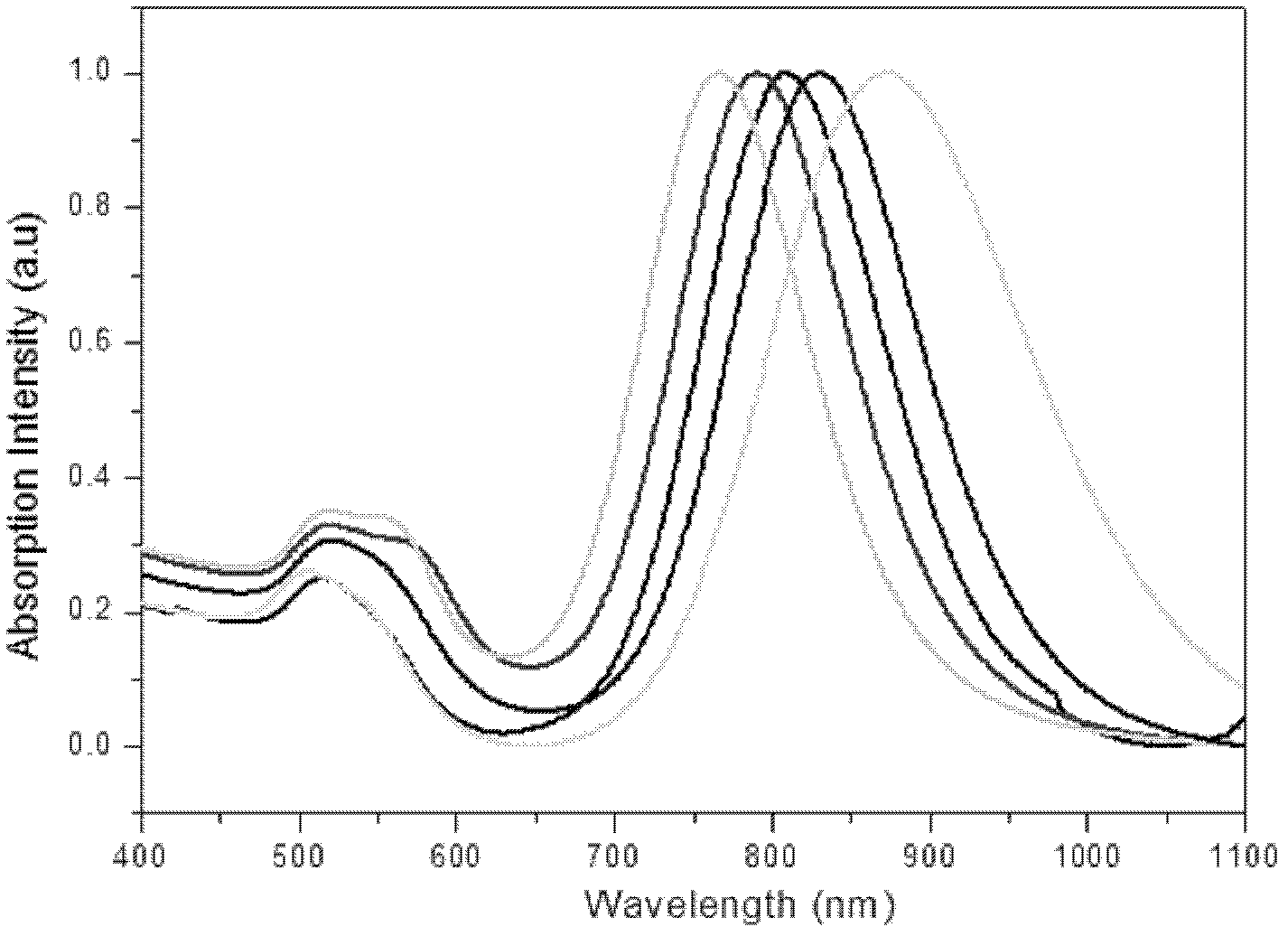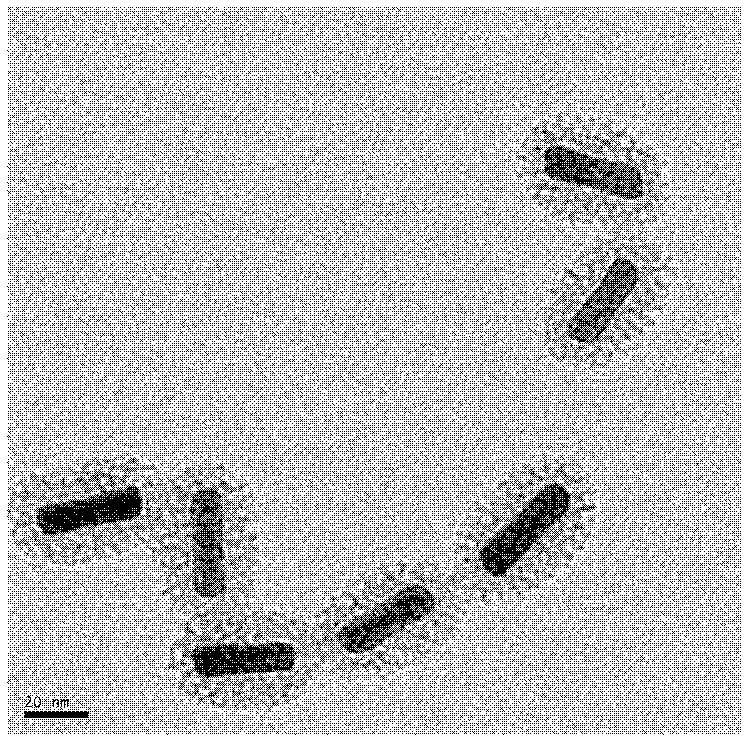Surface-enhanced Raman scattering probe and preparation method thereof
A surface-enhanced Raman and probe technology, which is applied in the field of life analysis chemistry and nanomaterials, can solve the problems of low repeatability of the preparation method, high preparation cost, and complicated operation, so as to enhance the Raman signal and overcome the difficulty of repeatability Effect
- Summary
- Abstract
- Description
- Claims
- Application Information
AI Technical Summary
Problems solved by technology
Method used
Image
Examples
preparation example Construction
[0027] From the summary of the preparation method of the surface-enhanced Raman scattering probe, it mainly includes the following six steps: 1. Pre-preparing a noble metal with an aspect ratio between 2-6 and a surface plasmon absorption region between 500-2000nm wavelength range Nanorods; Ⅱ. React the Raman signal molecules with the noble metal nanorods prepared in step Ⅰ, so that the Raman signal molecules are adsorbed or coupled on the surface of the noble metal nanorods of the probe; Ⅲ. The noble metal nanorods prepared in step Ⅱ The surface forms an intermediate sandwich layer wrapping Raman signal molecules; IV, adding an amination solution to the ethanol solution dispersion system, and modifying the surface of the intermediate sandwich layer of the probe prepared in step III with amino functional groups, and simultaneously using tetrahydroxymethyl chloride Preparation of 1-3nm noble metal colloidal solution by phosphorous reduction method is used as the growth seed for ...
Embodiment 1
[0031] Embodiment 1 (the middle sandwich layer is silicon dioxide).
[0032] 1. Pre-preparation of gold nanorods (reference literature: Chem.Mater.2003, 15.1957): preparation of gold nanorods with an aspect ratio of 2-6 and a maximum ultraviolet absorption in the wavelength range of 500-2000nm.
[0033] (1) Preparation of seed solution: 5 mL of 0.5 mmol / L HAuCl 4 The solution was mixed with 5mL of cetyltrimethylammonium bromide (CTAB, 0.2mol / L) solution and stirred magnetically, then 0.6mL of newly prepared NaBH4 (0.01mmol / L) solution was added, and stirred at room temperature for 2min, and it was found that A yellow-brown gold colloid solution was used as a seed solution for growing gold nanorods.
[0034] (2) Growth of nano-gold rods: in a 50mL round bottom flask, add a certain volume of AgNO 3 (0.1mol / L) solutions (volumes of 0.05mL, 0.08mL, 0.12mL, 0.15mL and 0.18mL, and AgNO 3 The molar mass determines the aspect ratio of gold nanorods), then add 5mL of CTAB (0.2mol / L) ...
Embodiment 2
[0042] Embodiment 2 (the middle sandwich layer is polydielectric).
[0043] The same steps as in Example 1 will not be repeated here, but the differences are described in detail as follows: Step 3', after completing Step 2 of Example 1, dissolve the gold nanorods treated in Step 2 in 1.0 mM NaCl solution , add sodium styrene sulfonate (PSS) dissolved in NaCl (1.0mM) stock solution (10mg / ml), centrifuge after 30 minutes, and then disperse in 1.0mM NaCl solution, add polyacrylamine salt dissolved in NaCl (1.0mM) stock solution (10mg / ml) of PAH (PAH) was also centrifuged after 30 minutes, and repeated several times to form a sandwich layer of the polymer.
[0044] 4'. Mix the gold nanorod particles synthesized in step 3' with the gold seed solution synthesized in step 5 of Example 1, and make the gold seed nanoparticles adsorb on the surface of the polyelectrolyte polymer layer through physical electrostatic interaction.
[0045] 5', the nanomaterials processed in step 4' are ...
PUM
| Property | Measurement | Unit |
|---|---|---|
| thickness | aaaaa | aaaaa |
| thickness | aaaaa | aaaaa |
Abstract
Description
Claims
Application Information
 Login to View More
Login to View More - R&D
- Intellectual Property
- Life Sciences
- Materials
- Tech Scout
- Unparalleled Data Quality
- Higher Quality Content
- 60% Fewer Hallucinations
Browse by: Latest US Patents, China's latest patents, Technical Efficacy Thesaurus, Application Domain, Technology Topic, Popular Technical Reports.
© 2025 PatSnap. All rights reserved.Legal|Privacy policy|Modern Slavery Act Transparency Statement|Sitemap|About US| Contact US: help@patsnap.com



